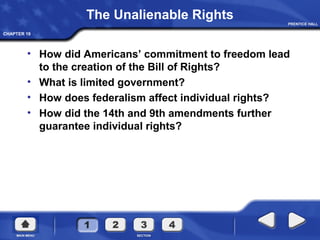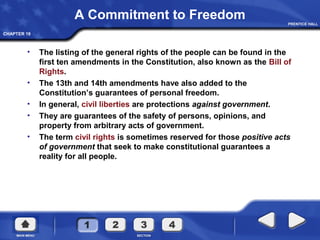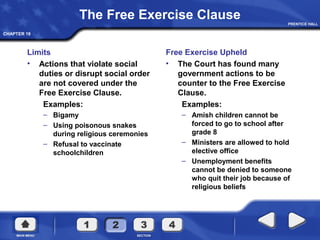This document summarizes key concepts from Chapter 19 on individual rights and liberties from the US Constitution. It discusses the following main points:
1) The Bill of Rights and later amendments expanded protections for individual freedoms against government overreach.
2) Rights are balanced and limited to prevent infringing on others, with tensions arising around issues like freedom of speech versus fair trials.
3) Religious freedom is protected through non-establishment and free exercise clauses, though debates continue around school prayer and funding private religious schools.
4) Other freedoms like speech, press, assembly, and petition allow open debate but have reasonable limits for issues like sedition, obscenity or trespassing on private property

































